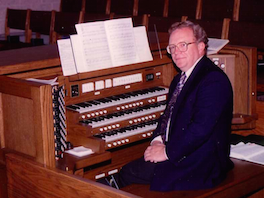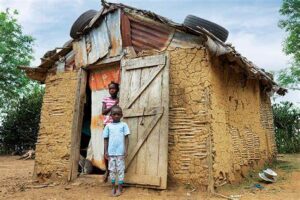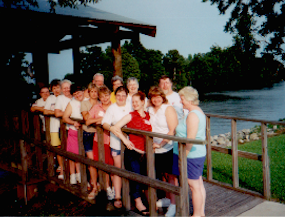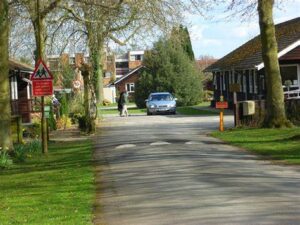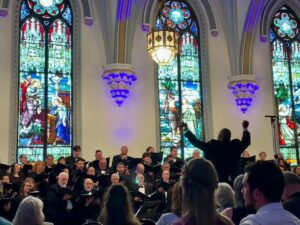by
Larry Pearce
6/6/22
Chapter 5A – Missions & Ministries, Various Volunteer Activities
I suppose that my serious service life began after my salvation experience as related in the Prelude. Perhaps, for the first time then, I realized that we were created to help others. Without that sense of looking for ways to make the world a better place and actually doing it, life doesn’t hold much meaning or satisfaction. Sure, we’ve all made greeting cards and gifts for grandma when we were scouts or Sunday School students, but probably the Youth Fellowship and Youth Club at church when I was in my teens in Moon Township brought service to others into focus. After I was elected the leader of both the young people in my congregation and at the district denominational level, I found greater opportunities and met others who also wished to serve. My friend Gary and I composed several vocal pieces with guitar and flute for one of the youth rallies. In addition, with some irony that I didn’t realize until later, I delivered a message from the pulpit called, “Everyone’s Gone to the Moon.” That title was from a popular 60s song by Jonathan King. I have to confess that these meetings took me to other Pittsburgh socio-economic communities where I had my first romantic relationships. I learned that the residents of the wealthier Pittsburgh suburbs of Mt. Lebanon and Upper St. Clair were just like me, with the same needs and wishes to help others. They just had a little more money, that’s all. Being chosen to be a member of the Key Club at our high school was such an honor. This youth group sponsored by Kiwanis International held regular clean-up days & dances. As President my senior year, I had the opportunity to attend conventions as far away as New York City, where I met leaders from across the country. I learned the protocols of leadership, sometimes the hard way. I remember coming late to a dinner in the Big Apple. Most had already eaten, the lights were dimmed, and a slide show was underway. I sat down to eat my salad and immediately began to spit the first mouthful into my napkin. Atop the lettuce was a big, fat sardine. This bumpkin had never tasted the small fish from the briny deep, and it was saltier than a McDonald’s French fry. To me, it tasted like a booger, not that I know what one of those tastes like. Of all the wonderful experiences I had in NYC, why do I remember that one?
Being chosen to be a member of the Key Club at our high school was such an honor. This youth group sponsored by Kiwanis International held regular clean-up days & dances. As President my senior year, I had the opportunity to attend conventions as far away as New York City, where I met leaders from across the country. I learned the protocols of leadership, sometimes the hard way. I remember coming late to a dinner in the Big Apple. Most had already eaten, the lights were dimmed, and a slide show was underway. I sat down to eat my salad and immediately began to spit the first mouthful into my napkin. Atop the lettuce was a big, fat sardine. This bumpkin had never tasted the small fish from the briny deep, and it was saltier than a McDonald’s French fry. To me, it tasted like a booger, not that I know what one of those tastes like. Of all the wonderful experiences I had in NYC, why do I remember that one?
Admittedly, most of Susan’s and my charity work since we’ve been married, over 50 years now, has been church-related. Names like Christian Childrens’ Fund, now called Child Fund, Compassion International, Crop and Church World Service, United Methodist Committee on Relief (UMCOR), Wycliffe Bible Translators, the Salvation Army, among others, all bring to mind the question of whether they benefited more from our time with them or we from them. I think the answer is a little of both. Let’s relate some of our experiences with them now. In the early summer of 1972, having just started working for WJAC Radio in Johnstown, I covered and participated in what is still known as a “CROP Walk.” That acronym stands for the “Christian Rural Overseas Program,” sponsored by the Church of the Brethren’s international relief agency, Church World Service (CWS). While it’s no longer just rural or overseas, it supplies food to hungry people around the world. This particular walk went from Pittsburgh to Philadelphia along U.S. Rt. 30. I walked east from Ligonier to Jennerstown, about 10 miles up and over the Laurel Mountain in a driving morning rain while taping interviews for broadcast. Hurricane Agnes, the costliest such storm to wrack the United States at the time, followed the walkers the whole way and truly challenged their commitment. In later years I became more active in the world hunger movement and organized sponsored fasting weekends and another major CROP walk. That one had two parts: one going north from Somerset to Jennerstown and my leg meeting them there, having gone from Johnstown south to Jennerstown. Unfortunately, I under-estimated my contingent’s uphill climb and we got to the destination after the others had arrived. Fortunately, they enjoyed the picnic we had planned, and left – left some food for us, that is. But, that, unfortunately, might have been the last CROP walk in the area.
In the early summer of 1972, having just started working for WJAC Radio in Johnstown, I covered and participated in what is still known as a “CROP Walk.” That acronym stands for the “Christian Rural Overseas Program,” sponsored by the Church of the Brethren’s international relief agency, Church World Service (CWS). While it’s no longer just rural or overseas, it supplies food to hungry people around the world. This particular walk went from Pittsburgh to Philadelphia along U.S. Rt. 30. I walked east from Ligonier to Jennerstown, about 10 miles up and over the Laurel Mountain in a driving morning rain while taping interviews for broadcast. Hurricane Agnes, the costliest such storm to wrack the United States at the time, followed the walkers the whole way and truly challenged their commitment. In later years I became more active in the world hunger movement and organized sponsored fasting weekends and another major CROP walk. That one had two parts: one going north from Somerset to Jennerstown and my leg meeting them there, having gone from Johnstown south to Jennerstown. Unfortunately, I under-estimated my contingent’s uphill climb and we got to the destination after the others had arrived. Fortunately, they enjoyed the picnic we had planned, and left – left some food for us, that is. But, that, unfortunately, might have been the last CROP walk in the area.
In the winter of 1978, after the summer of the Johnstown Flood and my reassignment at WJAC Radio from manager to salesman, our Jennerstown United Methodist Church sent a contingent to the impoverished Caribbean island of Haiti under the auspices of what was then called the West Indies Mission. The name has since been taken by the Mormons. Our assignment was to assist in building a school. A half-dozen of us, including the pastor, set off on a snowy Sunday afternoon in a van headed for Florida. My first memory was of our preacher pulling up to the toll booth on the turnpike and asking for “the preacher’s discount.” We all had a good laugh over that one. After an 18-hour ride with half of us asleep in the back of the van, we arrived at the airport in Southern Florida, ready for a 90-minute flight to the capital city of Haiti, Port-au-Prince. My first memory upon landing was the security line, as if this country had anything to fear from incoming rich Americans. One of the guards, digging into our tool boxes, cut his hand on a saw blade. Angry and bleeding, he spouted something in French, I think blaming us for the accident.
We finally arrived at the gated mission compound and were told not to drink the tap water, which was collected from the roof. I remember brushing my teeth one day and inadvertently running my toothbrush under the spigot and rinsing my mouth out with the same “dirty” water. I can’t say for certain, but that would end up costing me dearly by the time I got home. Stay tuned. Our food was carefully prepared by natives who knew what Americans could tolerate. For example, the abundant plantains, a relative of the banana, were to be eaten away from the stem-attachment side only. Apparently harmful bacteria could accumulate at the stem side.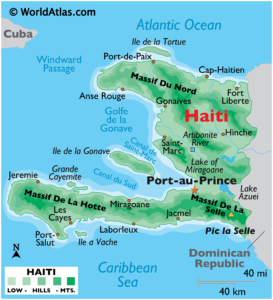 Our trips to the work site were delayed the entire first week because of supply issues, but I recall the first truck ride into the country over washed out, rough roads. We passed a lady preparing a fire to cook a meal. She had a donkey tied nearby to a tree, and that donkey was not there when we came back. Everyone was sure that she killed, cooked, and ate the poor animal. I’m not so sure. The youngsters always grabbed a stalk of sugar cane on their way to school. That was their breakfast, and apparently their teeth suffered. At school, the same type of cooking arrangements that the lady had were being prepared for school lunches, the only hot, nutritious food the kids ever got. I saw stacks of cereal grain bags labeled World Vision International (WVI) and “Transportation provided by the United States of America.” I supported WVI for years after that. Those same young children could be seen relieving themselves anywhere they happened to be, without regard for modesty or privacy. How different that practice is in developed countries such as ours.
Our trips to the work site were delayed the entire first week because of supply issues, but I recall the first truck ride into the country over washed out, rough roads. We passed a lady preparing a fire to cook a meal. She had a donkey tied nearby to a tree, and that donkey was not there when we came back. Everyone was sure that she killed, cooked, and ate the poor animal. I’m not so sure. The youngsters always grabbed a stalk of sugar cane on their way to school. That was their breakfast, and apparently their teeth suffered. At school, the same type of cooking arrangements that the lady had were being prepared for school lunches, the only hot, nutritious food the kids ever got. I saw stacks of cereal grain bags labeled World Vision International (WVI) and “Transportation provided by the United States of America.” I supported WVI for years after that. Those same young children could be seen relieving themselves anywhere they happened to be, without regard for modesty or privacy. How different that practice is in developed countries such as ours.
Our party carried packed lunches for us workers with several extra for Haitian volunteers who would trade their muscle for something to eat. The touching thing to me was that the men were accompanied by their wives and children, with whom he would share the lunch – not much to go around. The building construction was entirely of cement and bricks formed from the cement. The foundation and pillars were formed first, with the block walls filling in between the uprights. This apparently was a safety technique, relatively new, allowing the walls to fall first in an earthquake thus affording shelter for the occupants. The theory has certainly been tested several times since I was there.
During our week of inactivity at the compound we burned the garbage and collected the residual in boxes, which we hauled into the countryside: cans, metal parts, and anything that was incombustible. The natives followed us to the dumping site and quickly claimed the leftovers. I’m told they cleaned everything carefully and constructed “craft items” which were sold at the markets along the road or in town. Can you imagine what they could do with fresh, new materials? During our infrequent trips to center city, we were followed by the children who would shout, “Missa, gimme dolla.” We were warned not to “enable them” by giving handouts. It broke my heart to turn my back and walk away, not knowing the exact need they might have. I had brushed up on my college French before the trip, only to find out that Haitians speak Creole, a very different French derivative. I couldn’t communicate with them no matter how hard I tried. Nor could I understand the supposed curse of the voodoo drums that interrupted my sleep in the night. Those were the times when I would cling close to my Lord Jesus and be comforted by His promises.
Finally the day came to fly back to America. As I looked out the plane window over Port-au-Prince, I could see the raw, gray sewage discoloring the bay for miles out toward the ocean. No wonder we had driven so far from town to find a clean beach from which to swim on one of our free days. But the poor health of many Haitians truly hit when I reached home in Forwardstown and was so sick that I couldn’t walk. Our whole party was down for days. Had we taken something into the tropics and incubated it over the two weeks we were gone? Or had my careless bout with the toothbrush and a glass of water been the culprit. With a fever in the low 100s, I haven’t been so sick since Covid in 2019. I missed two days of work back in ’78, which was unheard of for this otherwise healthy guy. For this I praise God. I had the full experience of a missionary to a developing country, but I remember kissing the ground when I got back to the States, saying “Never again.” I did, however, present my story with slides many times over in the months that followed.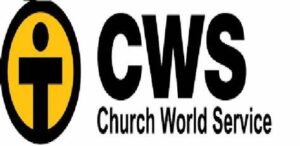 Another activity that a small group of us from the Jennerstown Methodist enjoyed was traveling to New Windsor, MD, to sort donated clothing for CWS. I remember throwing a handful of trousers down the chute, from the second floor where they had been stored in boxes, to the ladies on the first for inspection and repackaging. As if by some miracle, a whole bunch of cash money came flying out of the pockets. Everyone scrambled to gather it up, and lest you think we accepted it as reimbursement for our three-hour car ride, we did the right thing and handed it into the office for what it was intended – to help pay for the future poverty assistance program. Returning home tired and dirty was payment enough, feeling as if we somehow made a difference.
Another activity that a small group of us from the Jennerstown Methodist enjoyed was traveling to New Windsor, MD, to sort donated clothing for CWS. I remember throwing a handful of trousers down the chute, from the second floor where they had been stored in boxes, to the ladies on the first for inspection and repackaging. As if by some miracle, a whole bunch of cash money came flying out of the pockets. Everyone scrambled to gather it up, and lest you think we accepted it as reimbursement for our three-hour car ride, we did the right thing and handed it into the office for what it was intended – to help pay for the future poverty assistance program. Returning home tired and dirty was payment enough, feeling as if we somehow made a difference.
 Before I talk about what I feel is my main “calling,” church music, let me briefly relate some other service experiences I’ve had with church-related organizations. As you might know, my Pearce family ancestors had a strong, non-conformist relationship with the 18th century evangelist John Wesley in England. You also remember that the United Methodist Church was our first strong and active membership after Susan and I got married. My great-great grandparents Richard and Susan began a movement to bring Methodism to the North Park area of Pittsburgh after they arrived in 1820. Their son Charles and daughter-in-law Permelia were charter members of the Salem Methodist Church some 20 years later. The Wesley brothers, John and Charles, were not only the inspiration for church planting in America, but their charity inspired later organizations like the Salvation Army and Goodwill Industries. Susan and I, however, became most active in the 20th century humanitarian aid arm of the Church known as the United Methodist Committee on Relief (UMCOR), which was formed before World War II. Aside from contributing to the offering plate on Sundays, we spent a day in nearby Butler County with my sister Ellen packing “flood buckets” for victims of hurricanes and other natural disasters. Containing cleaning supplies and utensils, they were designated for victims in the U.S.
Before I talk about what I feel is my main “calling,” church music, let me briefly relate some other service experiences I’ve had with church-related organizations. As you might know, my Pearce family ancestors had a strong, non-conformist relationship with the 18th century evangelist John Wesley in England. You also remember that the United Methodist Church was our first strong and active membership after Susan and I got married. My great-great grandparents Richard and Susan began a movement to bring Methodism to the North Park area of Pittsburgh after they arrived in 1820. Their son Charles and daughter-in-law Permelia were charter members of the Salem Methodist Church some 20 years later. The Wesley brothers, John and Charles, were not only the inspiration for church planting in America, but their charity inspired later organizations like the Salvation Army and Goodwill Industries. Susan and I, however, became most active in the 20th century humanitarian aid arm of the Church known as the United Methodist Committee on Relief (UMCOR), which was formed before World War II. Aside from contributing to the offering plate on Sundays, we spent a day in nearby Butler County with my sister Ellen packing “flood buckets” for victims of hurricanes and other natural disasters. Containing cleaning supplies and utensils, they were designated for victims in the U.S.
One summer, Ellen joined us on a flight south to New Orleans and a drive west to Baldwin, LA, to an UMCOR warehouse and supply depot where we packed boxes with hygiene supplies like toothpaste, toothbrushes, soap, etc. and some clothing items. They were shipped from a nearby Texas port to developing countries around the world. Honestly, my most memorable moment from that trip was stepping out of the airport terminal in New Orleans and trying to walk in temperatures and humidity in the upper 90s when my glasses instantly steamed up. We Yankees just aren’t used to that.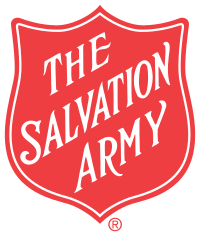 My Salvation Army experience has been limited to ringing a bell at Christmas time in front of the local Walmart with my neighbor. Aside from enthusiastically saying “Hi” to a lot of people I knew, I do remember the near frostbite weather conditions. I know that John Wesley got beat up several times, but did he ever shiver in the cold? What weather extremes I experienced in the name of missions!
My Salvation Army experience has been limited to ringing a bell at Christmas time in front of the local Walmart with my neighbor. Aside from enthusiastically saying “Hi” to a lot of people I knew, I do remember the near frostbite weather conditions. I know that John Wesley got beat up several times, but did he ever shiver in the cold? What weather extremes I experienced in the name of missions! Another man named “John,” willing to sacrifice for his faith, was 14th century theologian John Wycliffe. As with a lot of charities, today’s international Bible translation organization, Wycliffe Bible Translators (WBT), probably got Susan’s and my name from another non-profit, but that’s OK. The non-professional, non-seminary trained portion of WBT is called Wycliffe Associates, and they recently moved their headquarters from California to Orlando, Florida. I don’t know the full story behind that, but when Susan and I volunteered there one summer, there were many spaces for RVs, owned by retired people, I’m sure. I have to confess our self-interest in wanting to stay in their nice townhomes, not unlike the campers. While there wasn’t a lot for us to do mid-summer, I accomplished some painting in the steamy warehouse and Susan worked on youth activity kits in the air-conditioned main building. Our accommodations for the week were luxurious, and relatively cheap, the food was great, and we got to visit some seldom-seen relatives in the area on our time off.
Another man named “John,” willing to sacrifice for his faith, was 14th century theologian John Wycliffe. As with a lot of charities, today’s international Bible translation organization, Wycliffe Bible Translators (WBT), probably got Susan’s and my name from another non-profit, but that’s OK. The non-professional, non-seminary trained portion of WBT is called Wycliffe Associates, and they recently moved their headquarters from California to Orlando, Florida. I don’t know the full story behind that, but when Susan and I volunteered there one summer, there were many spaces for RVs, owned by retired people, I’m sure. I have to confess our self-interest in wanting to stay in their nice townhomes, not unlike the campers. While there wasn’t a lot for us to do mid-summer, I accomplished some painting in the steamy warehouse and Susan worked on youth activity kits in the air-conditioned main building. Our accommodations for the week were luxurious, and relatively cheap, the food was great, and we got to visit some seldom-seen relatives in the area on our time off.
Another time, we found ourselves in the tiny town of Waxhaw, South Carolina, at the headquarters of what started as the Jungle Aviation and Repair Services, now abbreviated to JAARS. This Wycliffe-related organization does amazing work flying small planes around the world, delivering translators and equipment, mostly computers now, to far away places like Papua New Guinea. Lest you think that our time there was “sacrificial,” we were relegated to spending several days painting the swimming pool and laundry room. That’s OK too: the rooms was nice, the food was good, and we even met a couple from Johnstown. If son Matthew stays in Charlotte, we’ll probably spend another week there and visit him on the weekend. They have several incredible museums there.
Far and away, literally, the most meaningful time with Wycliffe was in early summer, 1996, a three-week stay in the village of Horsley’s Green, High Wycombe, just north of London, at a missionary translation and retreat center. I hate to bring this up but, not unlike our time in Florida, I worked construction in their stifling new English headquarters while Susan did office work in the air-conditioned library. We learned later that our time there was one of the hottest periods for them on record. I’m just greatful to have lived to forgive Susan. Just kidding! In my first E-gen article for this family history website, I related the tale of the weekend adventure of driving north, on what any American would consider the “wrong” side of the road, to the little Lincolnshire village of Bourne. Just off of the superhighway M40, on the way to Oxford, the Wycliffe location and use of the company car gave us wonderful opportunities to see much of southern England. I related the story earlier of a 2006 cause we called “SOS,” Save our Sycamores. While not explicitly a sacred cause, saving as many of these noble old guys as possible was definitely a religious calling. I have written about the spiritual aspect of this project in one of my “Meditations.” I hope you’ll read it and go out and hug a tree!
I related the story earlier of a 2006 cause we called “SOS,” Save our Sycamores. While not explicitly a sacred cause, saving as many of these noble old guys as possible was definitely a religious calling. I have written about the spiritual aspect of this project in one of my “Meditations.” I hope you’ll read it and go out and hug a tree! Another local responsibility that I consider a ministry is the leadership of our local cemetery, St. James Lutheran. My wife’s family goes back at least three generations buried there, most recently with her still-born sister and parents. Her paternal grandparents are there also with her great uncle, who was the first accidentally killed in the Boswell mine. Susan also has aunts and uncles of several generations buried there. The magnificent wood-framed church was built in 1886, an extension of a Lutheran charge further east. Susan’s Miller and Shaffer ancestors were in on the planning stages. Susan’s dad, my predecessor on the board, was a strong influence in the maintenance of both the church and the cemetery. One of the first censuses was taken during the Great Depression, in the 193os by the Works Progress Administration (WPA). I have tried to keep the records updated from our “Little Red Book” of plot purchases in an Excel program. To me, this is a calling to remember our forebears. They seem to come alive as I pass above with my weedeater every few weeks in the summer.We’re all fortunate to have a faithful board of directors who help. While the old church was torn down after a merger with two other area Lutheran churches in the 1960s, each of which has their own burial grounds, the St. James Cemetery continues to serve our community. Susan, Larry, and perhaps their children, are planning to be planted in Lot 100 just above a beautiful cherry tree facing west.
Another local responsibility that I consider a ministry is the leadership of our local cemetery, St. James Lutheran. My wife’s family goes back at least three generations buried there, most recently with her still-born sister and parents. Her paternal grandparents are there also with her great uncle, who was the first accidentally killed in the Boswell mine. Susan also has aunts and uncles of several generations buried there. The magnificent wood-framed church was built in 1886, an extension of a Lutheran charge further east. Susan’s Miller and Shaffer ancestors were in on the planning stages. Susan’s dad, my predecessor on the board, was a strong influence in the maintenance of both the church and the cemetery. One of the first censuses was taken during the Great Depression, in the 193os by the Works Progress Administration (WPA). I have tried to keep the records updated from our “Little Red Book” of plot purchases in an Excel program. To me, this is a calling to remember our forebears. They seem to come alive as I pass above with my weedeater every few weeks in the summer.We’re all fortunate to have a faithful board of directors who help. While the old church was torn down after a merger with two other area Lutheran churches in the 1960s, each of which has their own burial grounds, the St. James Cemetery continues to serve our community. Susan, Larry, and perhaps their children, are planning to be planted in Lot 100 just above a beautiful cherry tree facing west.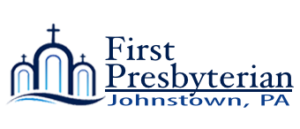 Before ending with my true passion, church music, allow me to mention services to various local church leadership positions. Shortly after accepting a substitute organist job at First Presbyterian, Johnstown, I signed on to their publicity committee. In addition to making suggestions to the monthly newsletter, we were able to purchase a new sign for the front of the building. I was honored to have been ordained an Elder in 1987, on the anniversary of the Great Johnstown Flood. Back in 1889, the old church building was used to collect some of the bodies of the 2,200 victims for identification. Today, in less gruesome times, the church hosts the annual Nativity Festival, the Johnstown Concert Series, and regularly offers meals to the local disadvantaged, to name a few well-know activities. Johnstown and its Great Flood is also associated with the America Red Cross and heroines like Clara Barton and Florence Nightingale. While I can’t begin to compare my life to theirs, I am proud of my giving more than 15 gallons of blood over many years to various local Red Cross blood drives. I have to admit that their free meals after getting off the donation table is still an attraction. Sometimes I have no shame.
Before ending with my true passion, church music, allow me to mention services to various local church leadership positions. Shortly after accepting a substitute organist job at First Presbyterian, Johnstown, I signed on to their publicity committee. In addition to making suggestions to the monthly newsletter, we were able to purchase a new sign for the front of the building. I was honored to have been ordained an Elder in 1987, on the anniversary of the Great Johnstown Flood. Back in 1889, the old church building was used to collect some of the bodies of the 2,200 victims for identification. Today, in less gruesome times, the church hosts the annual Nativity Festival, the Johnstown Concert Series, and regularly offers meals to the local disadvantaged, to name a few well-know activities. Johnstown and its Great Flood is also associated with the America Red Cross and heroines like Clara Barton and Florence Nightingale. While I can’t begin to compare my life to theirs, I am proud of my giving more than 15 gallons of blood over many years to various local Red Cross blood drives. I have to admit that their free meals after getting off the donation table is still an attraction. Sometimes I have no shame.
After answering several callings to other music positions in the area, Susan and I moved our memberships back to the Jennerstown United Methodist where we had raised our children. With that came teaching Sunday school classes, work days at nearby Camp Allegheny, and most importantly to me, presiding over the church’s administrative board. I thought that was a tough job until I represented JUMC at the Western Pennsylvania Annual Conference in Grove City. Imagine voting on decisions that affect some 800 churches with over 150, 000 members in 10 districts around our part of the world. If John Wesley only knew what he started!
Chapter 5B – Church Music
Beginning with writing and performing music with high school classmates for Youth Presbytery rallies mentioned above, my heart has always been with church music. You heard about my desire to attend the sacred music schools at Capitol University in Columbus, Ohio, Westminster Choir College at Princeton, and Union Seminary in New York City. Those never panned out, nor for that matter did bigger positions at prestigious churches in bigger cities. After supply-organ playing and choir work at various churches in the two-county area, I took longer stints at Presbyterian churches in Westmont, suburban Johnstown, and downtown. I accepted the part-time head of music position at Second Presbyterian in Johnstown for several years. Then, in the mid-90s, I got what I call “my big break,” Music Directorship at Mt. Calvary Lutheran in Richland Township, also a suburb of Johnstown. There, I was responsible for weekly vocal and monthly bell choir performances and organ music at two Sunday services and many more during Advent and Lent. I truly sharpened my musical and interpersonal skills there.
Meanwhile, Susan was either directing the choir back at Jennerstown United Methodist or singing at First Presbyterian, Johnstown. She and I also presented community cantatas at Christmas and Easter in the Jennerstown area, and she sang recitals at several local churches. All this while making sure the mother-in-law could baby sit and there was transportation to the various venues. There were times when we didn’t know if we were coming or going.
After we moved our memberships to St. Paul’s EPC in Somerset, we joined the choir and I play organ for services about once a month while continuing to substitute in area churches. Susan sings solos, joins me in piano-organ duets, and now serves on the Worship Committee there. When we weren’t playing or singing, we didn’t always attend in person during the Pandemic. Services are televised on YouTube. After things returned to near normal, we began looking for some extra-curricular music activities. The 30-year old Johnstown Symphony Chorus was auditioning, so we tried-out and were accepted. After weekly 2 1/2-hour masked rehearsals last fall, we performed Handel’s Messiah to a packed house at the University of Pittsburgh-Johnstown, also masked. That concert included part of our nearly century-old orchestra and was televised. Rehearsals for a variety of sacred works with the chorale began again in January, now unmasked. Our spring performance, part of the subscription series, was held before two full houses at Johnstown’s new Grand Halle, a 100+year old converted Catholic Church in what we consider the “ethic part of Johnstown,” the city’s West End. While not technically perhaps a church mission or ministry, I think Susan would agree with me that anytime one “Make(s) a Joyful Noise Unto the Lord,” as we have done in concerts thus far, we are lifting-up our Maker and Redeemer. May all of our activities continue in this spirit as long as we have breath.
Move to: Chapter 6 – Interlude to More Retirement Activities
Return to: Table of Contents
Last revised 6/11/22

